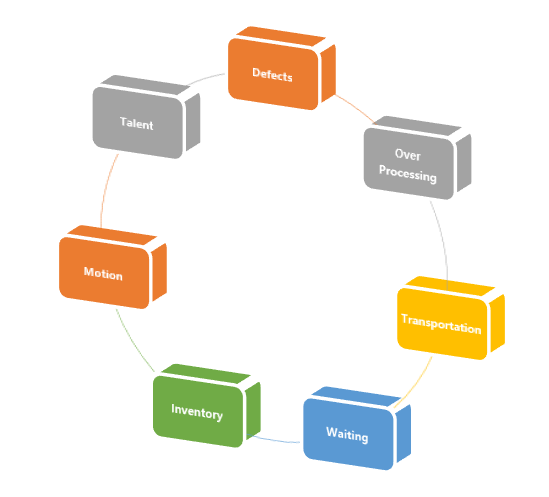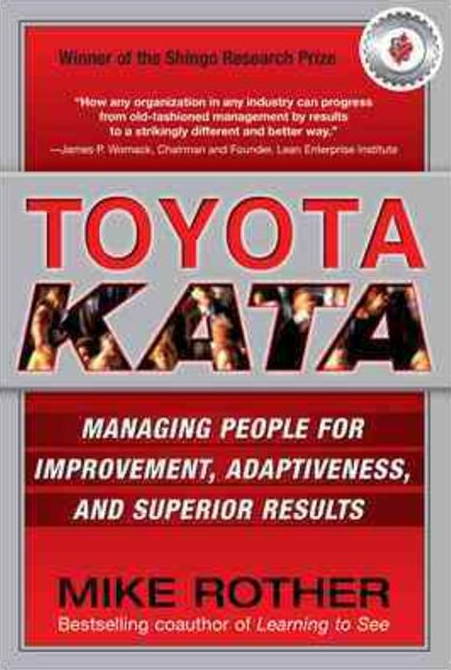Lean Manufacturing
린 제조
Lean Manufacturing is about eliminating waste from the manufacturing process without negatively impacting productivity. In other words, it aims to implement business processes that achieve high quality, safety and worker morale and reducing cost as well as shortening lead times at the same time.
린제조는 생산성에 부정적인 영향을 주지 않고 제조공정에서 낭비를 제거 하는 것이다. 즉, 품질, 안전, 근로자의 사기진작과 동시에 리드타임 단축은 물론, 비용 절감도 실현하는 비지니스 프로세스를 구현하는 것을 목표로 한다.
Furthermore, waste is any activity or expenditure of resources that does not add value from the customer's point of view. In Lean manufacturing, there are seven types of waste(eight types with Talent) identified:
더구나, 낭비는 고객의 관점에서 가치가 부여되지 않는 자원의 여러 활동이나 지출이다. 린제조에서, 7가지(8가지) 유형의 낭비가 확인 된다.
Over-production against plan - 과잉생산
Waiting time of operators and machines - 작업인원 또는 기계의 대기 시간
Unnecessary transportation - 불필요한 이동
Waste in the process itself - 공정내의 불필요한 낭비
Excess stock of material and components - 재고 또는 부품의 과잉 재고
Non value-adding motion - 가치 없는 불필요한 모션
Defects in quality - 품질불량
(Talent) - 재능

Six Sigma
식스 시그마
Six Sigma is a set of tools and techniques for the improvement of business processes. The goal is to create customer experience improvement by means of variation's identification and elimination. This can be accomplished by the implementing DMAIC, a Six Sigma sub-methodology. DMAIC is the abbreviation for:
식스시그마는 비지니스 프로세스의 개선을 위한 툴과 기술의 적용이다. 편차를 식별 및 제거를 통해 고객 경험 개선을 만들어 내는 것이 목표이다. 이것은 식스시그마 하위 방법론인 DMAIC 를 구현함으로써 달성될 수 있다. DMAIC 는 다음의 약칭이다.
- Define: define the problem in order to solve it. - 정의 : 무엇을 해결하기 위해 문제를 정의
- Measure: measure all of your available data as well as take a more detailed look into your processes. 측정 : 가용한 모든 데이터 뿐만 아니라, 공정 내부의 거의 모든 상세한 내용을 측정
- Analysis: perform analysis of your findings and figure out the problem's root. 분석 : 문제의 근본 원인을 찾아내고 명확하기 위한 분석하는 행위
- Improvement: once you analyzed your data, find possible solutions and implement them. 개선 : 가용 데이터의 분석 후, 가용한 솔루션을 찾고 이를 개선함.
- and Control: ensure to maintain your new implemented process. 제어 : 새로 개선된 공정을 관리함.
Kaizen
개선
Kaizen is Japanese and stands for "Continuous Improvement". It refers to activities aiming for the implementation of positive, ongoing changes at the work station. In other words, it is a strategy that involves all employees from every company level to work together and proactively with the goal of achieving regular, incremental improvements to the manufacturing process.
카이젠(개선)은 Continous Improvement 를 뜻하는 일본어 이다. 이는 작업장에서 긍정적이고 지속적인 변화의 수행을 목표로 하는 활동을 말한다. 즉, 제조 공정의 정기적이고 점진적인 개선을 목표로 기업차원에서 모든 직원이 함께 능동적으로 협력하는 전략이다.
Kaizen puts emphasis on the significance of continuous improvement. It is not enough to undertake changes once. Organizations have to make an effort in continuing improvements repeatedly. Numerous companies have applied Kaizen's concept and strategy in order to increase employee productivity, reduce costs, and improve the overall customer experience.
카이젠은 지속적인 개선임을 강조한다. 단 한번의 변화만으로는 부족하다. 조직은 지속적으로 개선을 위한 노력을 거듭해야 한다. 수많은 기업이 직원의 생산성을 올리고 비용을 절감하며 전반적인 고객 경험을 개선하기 위해 카이젠의 개념과 전략을 적용해 왔다.
'Operational Excellence' 카테고리의 다른 글
| What is DMAIC? (0) | 2020.09.23 |
|---|---|
| What are the outcomes of Effective Business and Process Improvement in your organization? (0) | 2020.09.09 |
| The main Principles to Achieve Operational Excellence (0) | 2020.09.09 |




